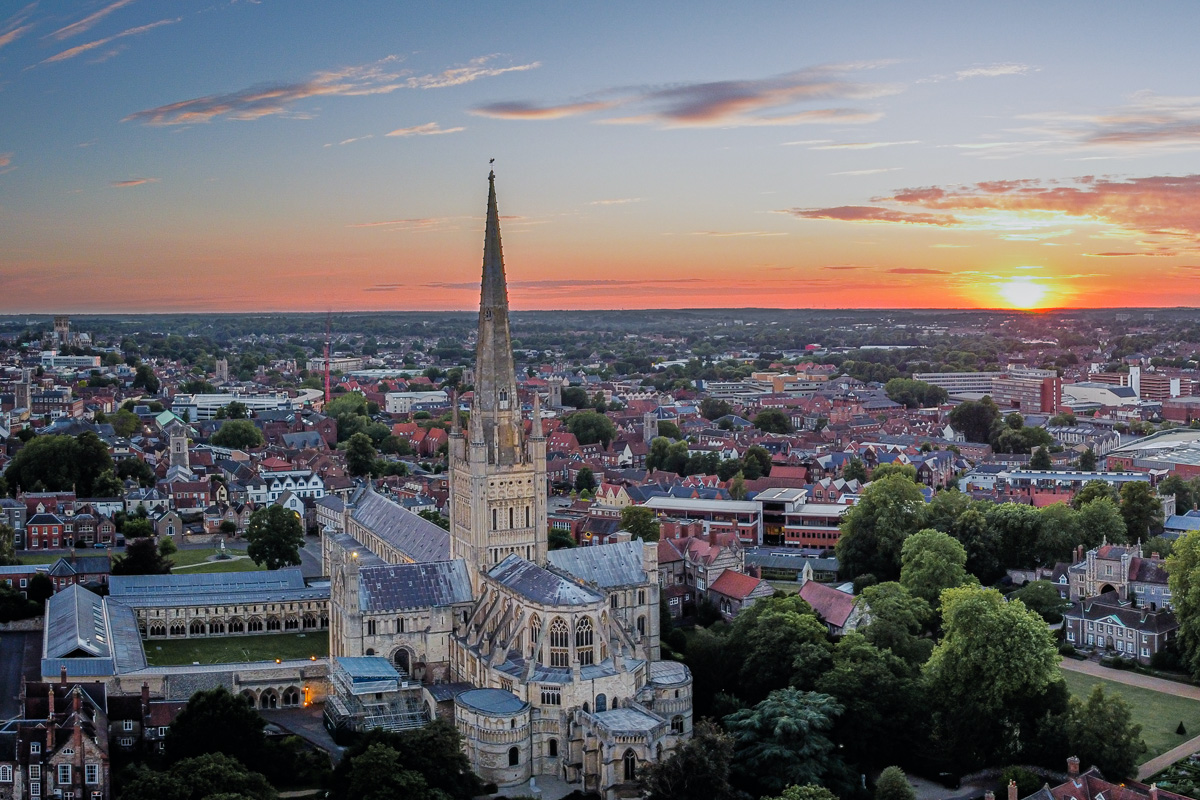Discover The Latest Property Statistics and Sold House Prices In Norwich, Norfolk.
Gain a competitive edge in the Norwich, Norfolk housing market using our extensive data on house prices with local insights and trends.
See more data for postcode districts in Norwich:

NORWICH
Property market data for Norwich in Norfolk. Compare data on the district postcode areas of Norwich including sold house price growth, long let gross rental yield, buyer demand, average asking price, average price per square foot and average rental prices. Explore Norwich with a range of tools to help you understand the local market.
In the centre of Norwich, NR2 long-let gross yield is 5.6%, the average rental price is £311 the average asking price is £286,983 and the average price per square foot is £317. There are currently N/A completed property sales per month, with a turnover of 17.0%. Toggle between postcode districts to see how different areas compare.
BUY-TO-LET PROPERTY INVESTMENT IN NORWICH
Understanding the Housing Market in Norwich: Key Facts and Figures
With a strong claim as the UK's most complete medieval city, Norwich, in Norfolk, sits by the River Wensum, around 100 miles from London, 40 miles from Ipswich and 65 miles from Peterborough. It is a medium-sized city with a population of around 144,000, as of the Census of 2021 and has a history reaching far back to at least Roman times as the then capital of East Anglia. By the 11th century and mainly due to the wool trade, it was as important a city as London and the capital of the most populous county in England. The industrial revolution of the 1700s would finally place London well ahead of Norwich, in terms of population and economic output, the facts being that Norwich was hardly touched by heavy industry or manufacturing. Instead, it was, as it is still now (to some degree), more of a cultural centre, known more for ideas than for products. Today, Norwich has a large economy. Out of a list of 208 local economic areas in the UK, It ranks at number 15 for employment numbers, with more than 33,000 businesses and 365,000 employees. And the council have ambitious plans to encourage development, with a strategy to encourage the development of 73,000 more homes, 5,300 more businesses and 57,000 new jobs by the end of 2026. Tourism is one of the most important areas of the economy, supporting more than 54,000 jobs and contributing £2.6 billion to the economy but hi-tech industries follow closely behind, with advanced engineering and manufacturing, life-sciences and agri-tech. An important development, a former RAF base, just 8 miles out from the city, is Scottow Enterprise Park, with nearly 200 different businesses, over 67% of which are in STEM sectors. Culturally, a lot is going on and Norwich. It was the first-ever English UNESCO City of Literature and home to the National Centre for Writing. Museums and galleries include The South Asia Collection, The Museum of Norwich, Strangers' Hall and the Norwich Castle Museum and Art Gallery. Just a couple of miles out of the city there is the Sainsbury Centre for Visual Arts and a widely visited Sculpture Park containing work by the likes of Antony Gormely, Jeff Koons, Degas and Picasso. Notable theatres include The Garage, Norwich Theatre, The Playhouse and Norwich Puppet theatre and of course, there are a significant number of live music venues that cover all genres. But when talking about culture in the city, one event stands out. The Norfolk and Norwich Festival is an annual 17-day international arts festival, that in 2022 celebrated its 250th anniversary. The city has a relatively small centre, with a relatively small city-living market, which nonetheless appeals to young professionals and students who have a choice of new-build apartment blocks and period conversions. There are, however, still some larger houses in the centre and some terraces and townhouses. Norwich Over The Water, for instance, is a fashionable area of the city, where housing mainly consists of Victorian terraces. The more expensive areas are to the west of the city with the so-called Golden Triangle (around Earlham Road and Newmarket Road) being the most sought-after. But generally, Norwich has something for everyone, from expensive areas to those that are more affordable; from family homes to single-person dwellings; from build-to-rent to buy-to-let. It is a city that is growing, is ambitious for the future and, for the South, is still good value for money.